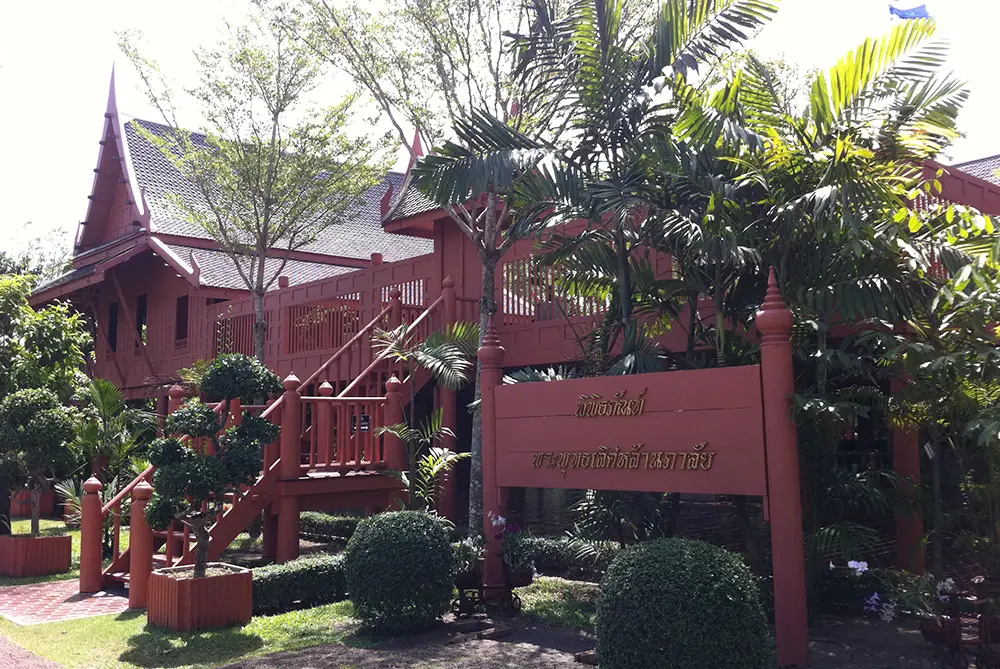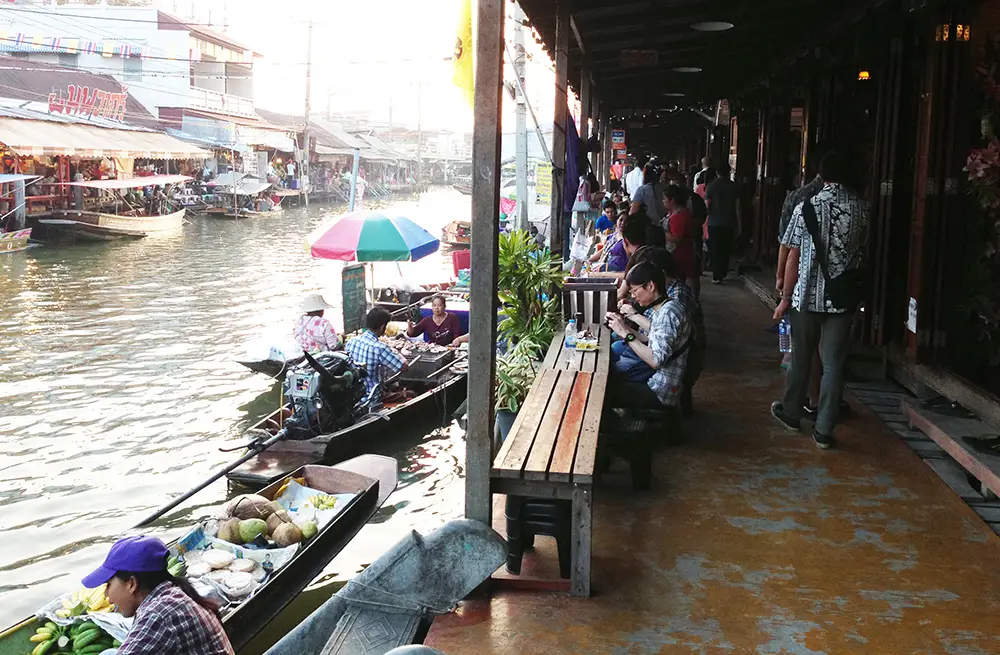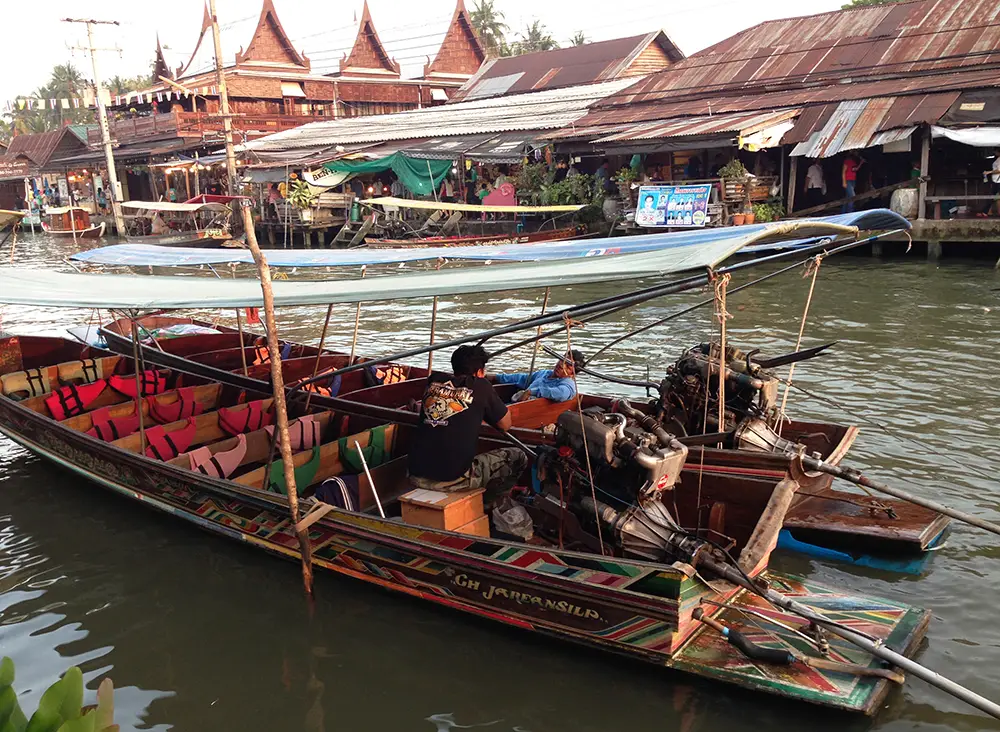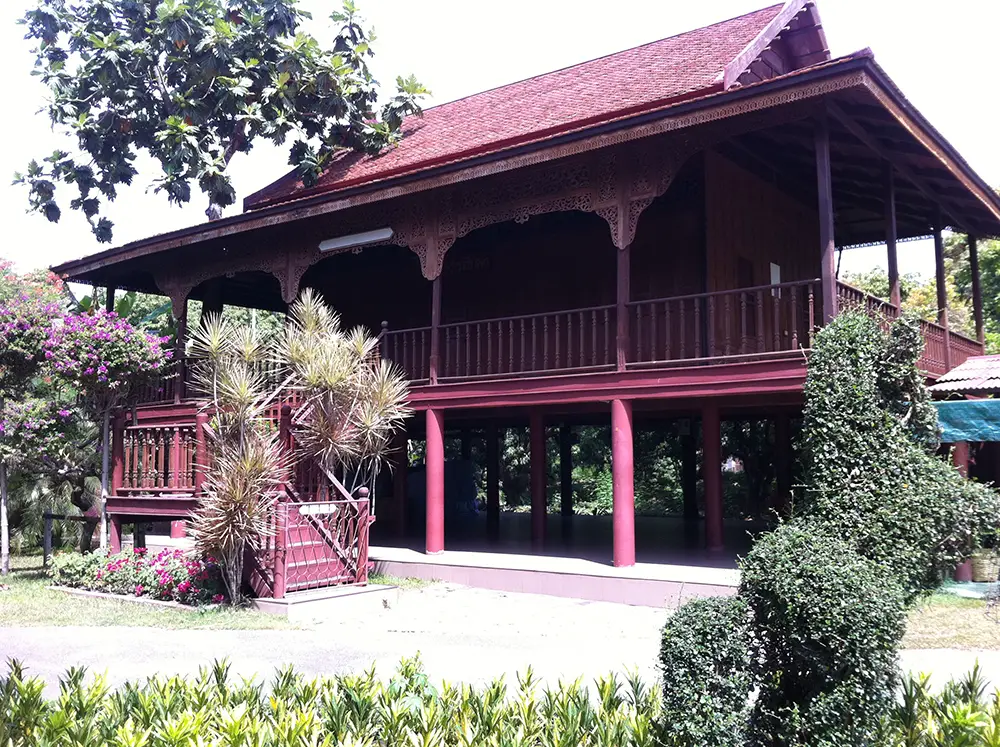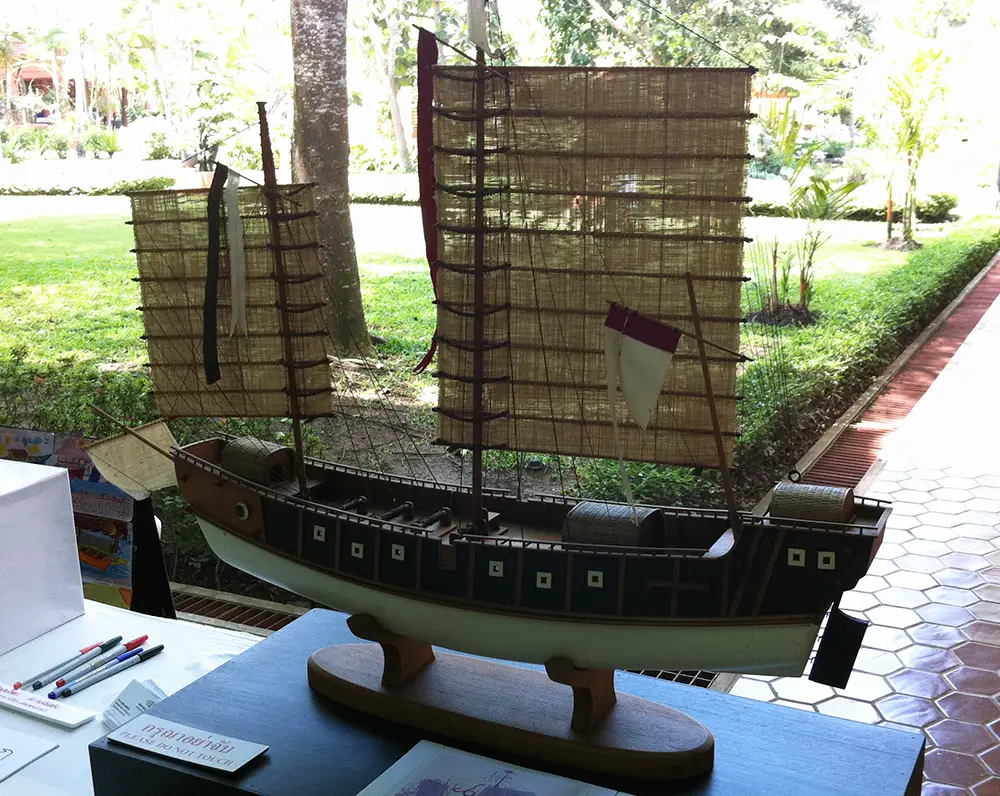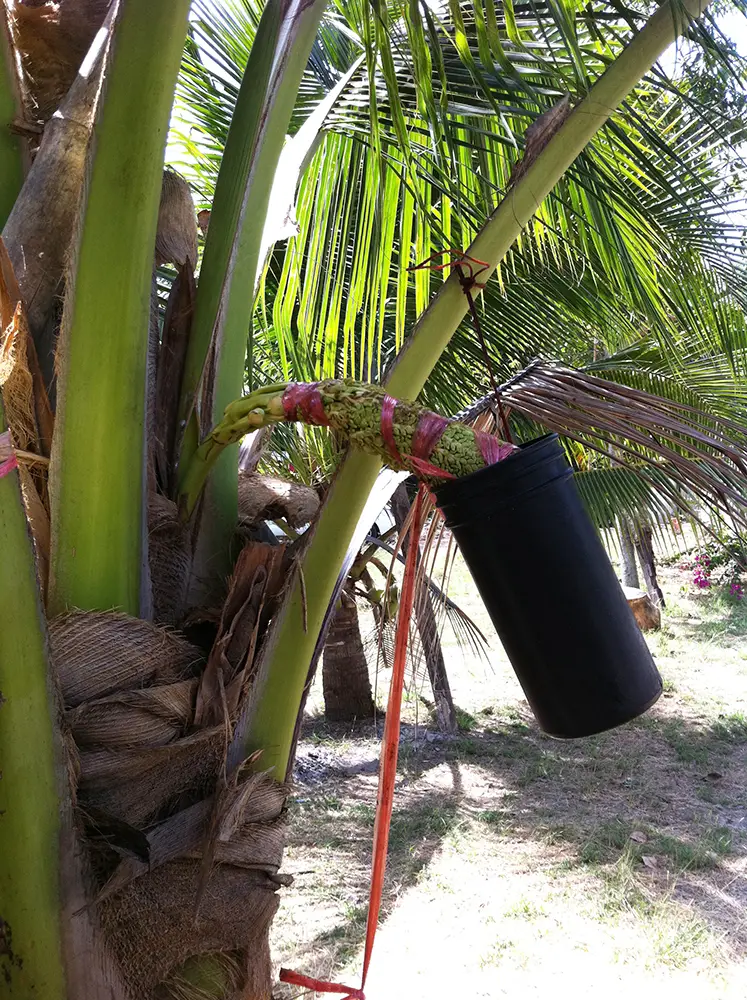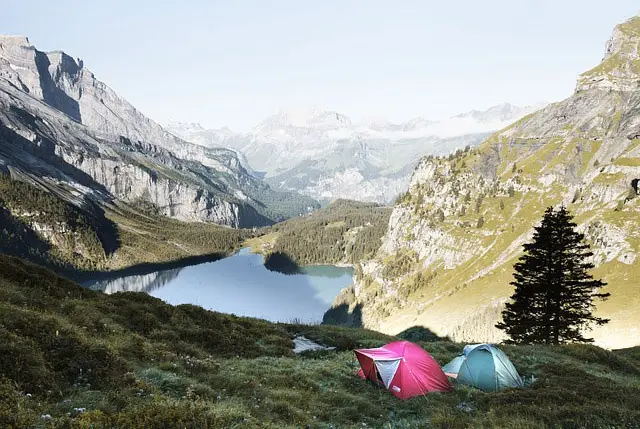In case you are a frequent participant in pub quizzes or you like to surprise your foreign friends and Thai co-workers with your knowledge of all things Thai, then remember this: the smallest province in Thailand is Samut Songkhram.
Located about 80 kilometers southwest of Bangkok, Samut Songkhram is a popular one-day trip destination because of Ampawa Floating Market, a favourite travel location among Thais. But this small central province has more than just the floating market to offer so, on your next trip to Samut Songkhram, by all means do visit Ampawa, but also make time for other activities.
We recommend a longtail boat ride, exploring King Rama II Park, a visit to the boat museum, and a stop at a palm sugar production house.
The etymology of the province’s names derives from two Sanskrit words and literally means “war ocean,” with “samut” standing for “ocean” and “songkhram” for “war.” The province is rich in natural resources with coconut trees growing in abundance alongside Samut Songkhram’s many rivers and canals. Actually, this is acknowledged in the seal of the province too, which shows a drum over a river and many coconut trees. The word “drum” in Thai is “klong” and thus the symbolism of the seal alludes to both the name of the major river, Mae Klong, and the former name of the province.
1. Eat Seafood at Ampawa Floating Market
Your first destination in Samut Songkhram, located at 50 kilometers from Bangkok, will have to be the floating market in Ampawa District. What once used to be a small village built on the banks of a canal tributary to Mae Klong River, is now a huge tourist attraction. But unlike the more popular floating market at Damnoen Saduak which is very touristy, Ampawa Floating Market has preserved more of the traditional way of Thai life.
Here you can buy food straight from the boats of the local villagers, most of which sell freshly grilled seafood, including giant prawns, squid, and shellfish. Of course that you can get other types of food and fruits, especially Thai deserts which go well with a huge meal. Once you’re full, don’t miss the opportunity to walk over the big bridge connecting the two banks of the canal, roam around the old style wooden shops, buy some souvenirs, and take some picturesque postcard-like photographs.
Ampawa Floating Market is open from Friday to Sunday starting in the afternoon until late in the evening, but we recommend you get there early as it gets very crowded.
2. Go on a Longtail Boat Ride
After you’ve eaten your full, make sure you don’t leave Ampawa for your next destination before you go on a longtail boat ride. It will give you a chance to explore the main canal and side waterways plus it will also give you an insight into the life of the Thai community living on their wooden stilts houses.
There are two routes you can choose from: one will take you to the temples in the area, the other will give you an extensive tour of the surrounding island. Both tours are worth a try, but if it’s already late in the evening, go for the island tour which will give you a chance to see hundreds of fireflies glowing on the river banks.
It costs 500 baht to book a boat or 50 baht for a seat but then you’ll have to wait for the boat to get more customers. Be warned that the seats are pretty hard and the sound of the engine is quite loud.
3. Explore King Rama II Memorial Park
The location of this memorial park is where it is believed to be the birthplace of King Rama II, the second monarch of the current Chakri Dynasty. A poet himself, Rama II spearheaded a time of cultural renaissance in both literature and Buddhist education, for which he was awarded the status of Person of the World by UNESCO. The park is a memorial to the king’s legacy.
The huge tract of land that covers the park is dotted with four traditional Thai buildings which showcase artifacts from the early Rattanakosin Era and that of the lives of the Siamese living in the Ampawa area. Both the buildings themselves and the displays inside are museum pieces which will add more depth and value to your relaxing walk in the park.
The park is open every weekday from 8:30am to 5pm and until 5:30pm at the weekend. The admission fee is 30 baht for adults and 5 baht for children.
4. Visit Ananchai Thai Boat Museum
Under one of the wooden houses at the King Rama II Memorial Park, there’s a Thai boat museum that displays both real boats and miniature ones created by Ananchai Chunnitinan, a Thai master craftsman and inventor. The museum is actually a small “branch” of a much larger museum located in Bangkok.
Nevertheless, you’ll get a chance to see what some of the Thai traditional boats look like, what their names are, how to assemble them, what tools are used to make miniature boats, and if you’re travelling with kids, there’s even a hands-on activity they might enjoy. For example, did you know that the chalom thaiyuan boat is used for cargo transportation, the hang maeng pong boat is used for long distance travel, and the phi lok boat is used for night fishing?
You can also buy your favourtie miniature boat for your own collection or as a gift to a special friend but, at 3,500 baht, prices are quite steep. The gift boat comes with a hard case luxurious box!
5. Understand the Palm Sugar Production Process
Thailand is famous for it’s sweets, curries and sauces, most of which are made from palm sugar. Samut Songkhram is known for its high quality coconut sugar extracted from coconut palm, but desserts are also made from the tree trunks of the sugar palm. To understand the production process you can visit one of the province’s cottage industries.
First, the sap is collected from the trees, then it is boiled in a large pan, and subsequently it is dehydrated until it turns into syrup, also called “liquid honey.” This sugary liquid is then heated and stirred until it becomes solid. One of the many final products can be small brown sugary cakes or other types of Thai desserts.
You can witness this process and buy locally made sweets at any of the many palm sugar production home businesses which dot the way back to Bangkok. Entry is free and the owners are more than happy to show you around.
From Bangkok, the trip to Samut Songkhram lasts a bit longer than an hour and can be made by a variety of public transportation. You can take the bus from the Southern Bus Terminal, the van from Victory Monument, or the train from Wongwian Yai Railway Station.
Samut Songkhram is also worth visiting during one of their annual festivals. To find out what local festivals will take place next, visit the province’s official website (Thai only).
